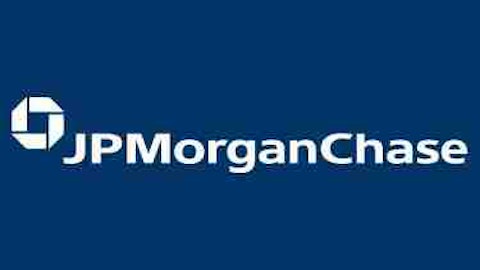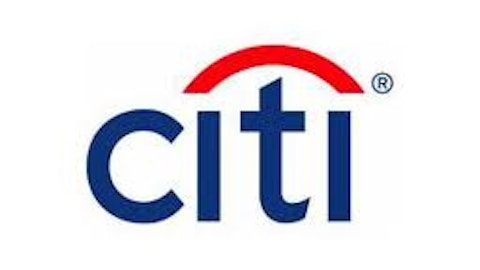Increased volatility and higher interest rates have caused headaches for many banking companies. However, that is not the case for JPMorgan Chase & Co. (NYSE:JPM), despite its woes. I believe these banks will benefit from the prevailing interest rate environment. Let’s see how.
Higher yields mean additional returns
The banking industry is highly reliant on interest rates as a source of income. However, banks have little control over the interest rates. The speculation around the unwinding of the third round of easing has increased interest rate volatility, and the markets have started to price in the effects of the Fed’s exit already.
As a result, 10-year Treasury yields have surged 34 bps since the start of this quarter. While it should be a concern for some banks as the value of their assets might fall, this is good news for JPMorgan Chase & Co. (NYSE:JPM). CEO and Chairman Jamie Dimon said in the financial conference hosted by Morgan Stanley that the bank is prepared for a rise in rates. Dimon added that if the yield on the 10-year Treasury moves up by 100 bps, JPMorgan Chase & Co. (NYSE:JPM) will make an additional $2 billion. The bank could make as much as $5 billion if the yield surges by 300 bps. Therefore, JPMorgan Chase & Co. (NYSE:JPM)’s investors should keep a close eye on the 10-year Treasury yield as it could be a key indicator of the bank’s profitability this quarter.
This is very much similar to what Wells Fargo & Co (NYSE:WFC) CEO said a week ago. Bloomberg reported that Wells Fargo & Co (NYSE:WFC) is positioned to benefit from higher interest rates. That’s because it has constructed its portfolio in a way where its interest bearing liabilities are more sensitive to changes in interest rates than the bank’s interest earning assets. As a result, the value of the bank’s interest bearing liabilities falls faster than the value of its interest yielding assets when the rates increase. This causes the bank to benefit from higher rates. However, Wells Fargo & Co (NYSE:WFC)’s CFO stopped short of giving estimated figures for this anticipated benefit.
Higher mortgage rates mean additional mortgage banking revenue
However, the CFO admits that mortgage applications coming from refinancing have slowed down. He expects the refinance share to plunge to 60% from the prior quarter’s 70%.
Dimon has a positive outlook on the US economy with some concerns about Europe. However, he believes the big corporations in the US are doing well, and consumers are paying down their debt. Therefore, the bank’s mortgage business should continue to do well despite a hike in mortgage rates.
While higher interest rates have caused refinancing volumes at JPMorgan Chase & Co. (NYSE:JPM) to slow down during the second quarter, mortgage origination have not been affected that much. Further, mortgage delinquencies at JPMorgan Chase & Co. (NYSE:JPM) are expected to decline at a rapid pace. This should result in more reserve releases. Dimon expects $1 billion in mortgage releases this quarter while another $1 billion set aside for credit card losses will also be released as consumers rapidly pay down their debt.
All is not well for JPM
Earlier this week S&P, one of the largest US credit rating agencies, downgraded JPMorgan’s long-term outlook as negative and termed the bank “systemically important.” It also said that the need for extraordinary government support in the event of another crisis is diminishing. Another one or two level downgrade can be expected for JPMorgan if S&P entirely removes the assumption of government support from its criteria.
This downgrade brings JPMorgan in line with seven other banks, including Bank of America Corp (NYSE:BAC) and Goldman Sachs Group Inc (NYSE:GS). However, S&P is clear that the US government support for “too big to fail” is waning.
Conclusion
The second quarter of the current year is marked with higher Treasury yields and mortgage rates. While this might be a concern for some banks, it is definitely not for JPMorgan, Wells Fargo & Co (NYSE:WFC) U.S. Bancorp (NYSE:USB). Therefore, I recommend investors buy the stocks before the rates go even higher.
Adnan Khan has no position in any stocks mentioned. The Motley Fool recommends Wells Fargo. The Motley Fool owns shares of JPMorgan Chase & Co (NYSE:JPM). and Wells Fargo. Adnan is a member of The Motley Fool Blog Network — entries represent the personal opinion of the blogger and are not formally edited.
The article Higher Rates Mean Higher Returns for These Banks originally appeared on Fool.com is written by Adnan Khan.
Copyright © 1995 – 2013 The Motley Fool, LLC. All rights reserved. The Motley Fool has a disclosure policy.





